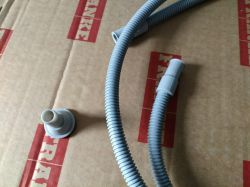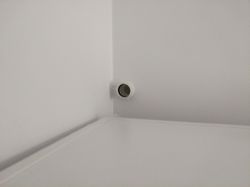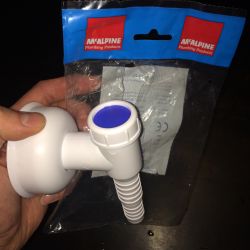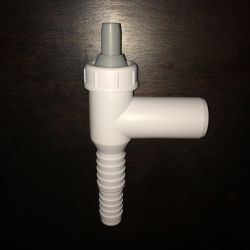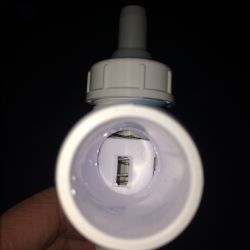FAQ
TL;DR: Bosch WTW85461PL supports an external drain “max 100 cm from the base”; plan a sealed, odor-safe 15 mm connection. [Elektroda, maczkus, post #17293282]
Why it matters: This helps homeowners cleanly connect a thin 15 mm dryer hose to 30–50 mm drains without leaks or odors.
Quick-Facts
- Max external drain height: 100 cm from the dryer base; route within this limit. [Elektroda, maczkus, post #17293282]
- Adapting 15 mm hose: use a 32/25 reduction, or a 32 mm plug drilled to 15 mm; many kits target sink siphons. [Elektroda, zhudomel, post #17293340]
- Non-standard joints must be perfectly tight to block sewer smells from escaping. [Elektroda, Borutka, post #17293580]
- Off‑the‑shelf fix: McAlpine washing‑machine siphon with removable top plug; ~PLN 25; 3/4" O‑ring used; internal valve present. [Elektroda, methaman, post #17789899]
- With external drain, some water may still collect due to self‑cleaning; “not a malfunction.” [Elektroda, tomruch, post #18065027]
Quick Facts
- Max external drain height: 100 cm from the dryer base; route within this limit. [Elektroda, maczkus, post #17293282]
- Adapting 15 mm hose: use a 32/25 reduction, or a 32 mm plug drilled to 15 mm; many kits target sink siphons. [Elektroda, zhudomel, post #17293340]
- Non-standard joints must be perfectly tight to block sewer smells from escaping. [Elektroda, Borutka, post #17293580]
- Off‑the‑shelf fix: McAlpine washing‑machine siphon with removable top plug; ~PLN 25; 3/4" O‑ring used; internal valve present. [Elektroda, methaman, post #17789899]
- With external drain, some water may still collect due to self‑cleaning; “not a malfunction.” [Elektroda, tomruch, post #18065027]
How do I connect a 15 mm Bosch dryer hose to a 30–32 mm wall outflow?
Use two proven methods. Sleeve the hose tip with a short larger tube and fit a 32/25 mm reduction gasket. Or insert a 32 mm plastic sewer plug into the drain and drill a centered 15 mm hole. Push the hose through and seal. The included gray accessory often suits a sink siphon inlet. “Insert a 32 mm plastic sewer plug… and drill a 15 mm hole in it.” [Elektroda, zhudomel, post #17293340]
Can the dryer pump water up to a wall drain?
Yes. The dryer already pumps condensate up to the upper water drawer. Discharging to a drain at a similar height is within capability. Keep the run short and within the allowed height. This mirrors the internal lift to the tank. [Elektroda, strucel, post #17293338]
Will the hose fall out if I just place it in the drain?
No. The dryer does not expel water under high pressure like a washer. “It is not the washing machine and the outflowing water has no pressure. It will not fall out alone.” Still ensure a snug, sealed fit to prevent odors. [Elektroda, Borutka, post #17293193]
My wall outlet measures 30 mm—what adapter should I search for?
Search for a 34/14 urinal reduction gasket. Many so‑called 30 mm wall stubs are actually nominal sizes that fit these reductions. The 15 mm hose tip mates after sleeving or drilling. The 30 mm measurement may be misleading. [Elektroda, strucel, post #17293364]
How do I connect directly to a Ø50 mm PVC drain without a sink siphon?
Use a purpose siphon branch with a machine inlet, or create a sealed insert. A practical DIY route is a plastic plug seated in the branch, drilled to 15 mm for the hose. Seal the pass‑through so it is odor‑tight. [Elektroda, zhudomel, post #17293340]
How do I make a 32 mm plug adapter for the 15 mm hose (3 steps)?
- Push a 32 mm plastic sewer plug into the drain branch until snug.
- Drill a centered 15 mm hole through the plug.
- Insert the hose; optionally sleeve the end and add a 32/25 gasket for grip. [Elektroda, zhudomel, post #17293340]
If my washer and dryer share a trap, can washer discharge backflow into the dryer hose?
Use a connection that maintains a water seal. The small internal valve in some siphons mainly blocks odors, not crossflow. If the dryer hose retains water, it acts as a trap. Without water, smells and unwanted flow paths may exist. [Elektroda, zhudomel, post #17790888]
Do I need a trap when hard-connecting the dryer to the drain?
Yes. Without a water seal, sewer smells can enter the appliance path. “By connecting the hose from the dryer, instead of this plug, you can pour odors from the sewage system into the dryer.” Maintain a water loop or use a proper siphon. [Elektroda, zhudomel, post #17790888]
Does using an external drain disable Bosch’s self-cleaning condenser?
No, the function remains. The manual excerpt notes residual water can still collect in the drawer due to self‑cleaning, even when using the drain. “Residual water… although the dryer is connected to the condensate water outlet.” This behavior is normal. [Elektroda, tomruch, post #18065027]
Will I ever need to clean the heat exchanger manually?
Possibly over time. One owner reported needing to open and clean manually after six years, despite the self‑cleaning feature. Treat this as periodic deep maintenance if airflow drops or cycles lengthen. This is an age‑related edge case. [Elektroda, kaczakat, post #17753427]
Where can I get a compatible adapter if my brand didn’t include one?
Use an aftermarket dryer/washer siphon kit. Example: Scanpart siphon product code 1130710015 supports such connections. It provides a prepared inlet for small hoses. Fit and seal per instructions. This avoids drilling plugs. [Elektroda, arxas89, post #18775106]
Is there a store-bought siphon that accepts the thin dryer hose?
Yes. A McAlpine washing‑machine siphon with a removable top plug accepts the dryer hose end. One user sealed it with a 3/4" O‑ring. The unit cost about PLN 25 and contains an internal valve. [Elektroda, methaman, post #17789899]
Do I need extra sealing or clamps on a DIY adapter?
Ensure an odor‑tight joint. Non‑standard combinations must be sealed perfectly to prevent sewer smells escaping. Use appropriate gaskets and make the fit secure. This is essential for hygiene and safety. [Elektroda, Borutka, post #17293580]
What drain height should I target when routing the dryer hose?
Keep the connection at or below the stated limit. The dryer supports an external drain up to 100 cm from the base. Plan the hose run accordingly to ensure reliable pumping and drainage. [Elektroda, maczkus, post #17293282]
